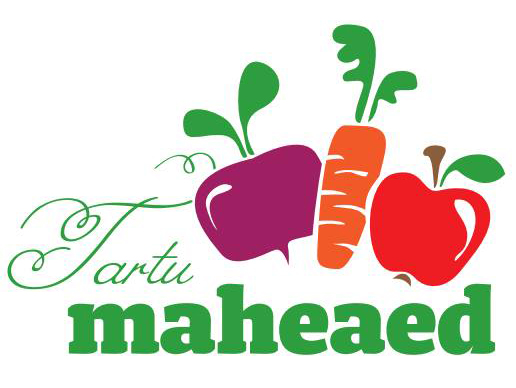1. Allocation of Allotments
1.1. Each member of the association (hereinafter referred to as the allotment user) has the right to use land (hereinafter referred to as the allotment) with a size of 25 to 150 m² (for plots allocated before 1.04.2023, up to 175 m²).
1.2. Allocation of allotments is based on the order of submission of applications.
1.3. The board organizes the allocation of allotments, and monitors compliance with the rules for the use.
1.4. The board has the right to change these rules, informing the allotment users about it, and also to reoragnise the use of land.
2. General Principles of Allotment Use
2.1. The allotment user must adhere to the boundaries of their allotment. The allotted allotment cannot be sublet or provided for use by third parties.
2.2. The allotment user has the right to use the allotment if they pay the membership fee annually by the deadline of April 1 and fulfil all the rules for allotment use. The amount of the membership fee is determined by the General Meeting of the Non-Profit Association.
2.3. In the Linnupargi garden, it is allowed to cultivate: vegetables, flowers, perennials, fruit trees, and berry bushes. In the Lehe garden, gardeners may continue cultivating vegetables and previously planted berry bushes/fruit trees until the garden is closed.
2.4. Allotment cultivation follows the principles of organic gardening: the use of mineral fertilizers, chemical weed and pest control agents is prohibited.
2.5. The allotment user has the right to erect a greenhouse with a floor area of up to 20 m² and/or plastic tunnels and compost bins on their allotted plot. In the Linnupargi garden, it is permitted to erect a wooden garden shed or shelter in accordance with the document “Requirements for Buildings in Tartu Organic Garden’s Linnupargi
Garden” approved by the board. Before constructing a building, an application and plan, including the location of the structure, must be submitted to the board.
2.6. Objects placed on the allotment must not shade neighbouring allotments from the sun, have a height of up to 2.3 m, and be compatible with the natural environment.
The allowed height of a compost bin is up to 1 m.
2.7. Efficient use of the allotment means that the land is cultivated, and only permitted plants and crops are grown. Creating lawn areas is allowed only between trees and bushes, and around sheds. Partially covering the area to control weeds is allowed in one gardening season; in the second year, this area must be put into use.
2.8. Belonging to the organic garden community also requires volunteer work from members to ensure the garden’s tidiness and sustainability. This includes communal work (creating and cultivating communal beds, harvesting) and contributing to the maintenance of communal areas (paths, ponds, shared buildings and their
surroundings, garden fences, etc.).
3. Rules for Allotment Use
3.1. While in the garden, each allotment user must take into consideration other users.
3.1.1. It is prohibited to be on other allotments without the owner’s permission and to take property and produce from there.
3.1.2. Smoking, alcohol consumption, letting dogs roam freely, and playing loud music are prohibited.
3.2. The allotment user is obliged to prevent the growth of weeds on the path adjacent to the allotment higher than 5 cm. The spread of weed seeds must be avoided.
3.3. When planting herbaceous plants, trees, and shrubs, the principle must be followed that lower plants are in front and taller plants are at the back when viewed from the main path.
3.4. Each allotment user must remove the waste generated from their activities from the garden.
3.5. Composting material must be stored on the user’s plot or taken to the designated composting area (if created). The board informs about allocating of a suitable area for communal composting by e-mail and notice board. Storing garden waste outside the garden (on the city land) is prohibited.
3.6. On their plot, users may use a small barbecue grill removed from ground provided its operation does not pollute the environment, disturb neighbouring allotment users, or create a fire hazard.
3.7. Allotment users may create borders up to 50 cm in height for their plot using natural materials only. Plastic bed borders, car tires, and other materials not suitable for the natural environment are prohibited.
3.8. Plastic or textile covers of pavilions and tunnels must be removed for the winter.
3.9. The use of pumps for drawing water from ponds is not allowed.
3.10. Unauthorized felling of trees (except for self-planted trees) is prohibited. If it is necessary, it must be first accepted by the board.
3.11. In addition to the above conditions, allotment users must observe and follow additional instructions provided by members e-mail list and/or notice board during the gardening season, including information about the opening hours of the garden.
4. Renouncing the Right to Use Allotment
4.1. The allotment user may give up the cultivation of the allotted plot, obtain replacement land, or suspend gardening activities for a certain period.
4.2. The gardener shall inform the board of the cessation, suspension, and/or desire to leave the association by email (tartumaheaed@gmail.com) or in writing.
4.3. The allotment user returns the plot cleared of all non-natural materials (plastic, unusable structures, etc).
4.4. A person who has ceased gardening activities may choose to remain a supporter member of Tartu Organic Garden and pay the supporter member’s fee.
5. Withdrawal of Allotment Usage Rights
5.1. The board may, by its decision, revoke the member’s allotment usage rights if they have not cultivated the plot in two consecutive years. The deadline for cultivating the land in the second calendar year is May 1st.
The document has been approved by the decision of the board of MTÜ Tartu Maheaed 5.11.2023.
